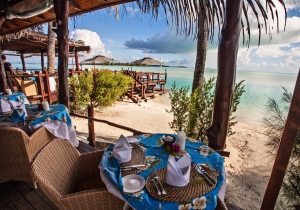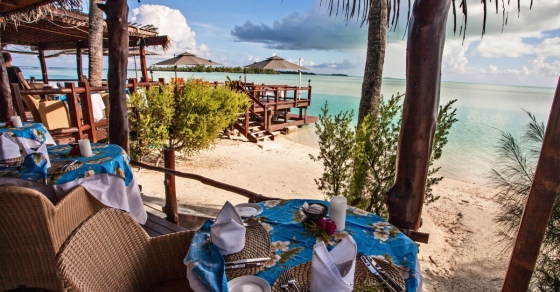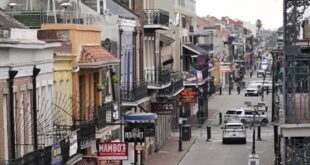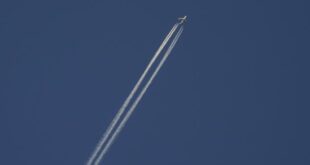
AVARUA, Rarotonga, Cook Islands
It was a quiet afternoon on Rarotonga, in the Cook Islands, when Lydia Nga got the news. Overnight her homeland, 15 Polynesian islands west of Tahiti, a paradise smaller than Detroit, had grown exponentially, reborn as a 1.8-million-square-kilometre nation.
But it wasn’t the islands that grew. In 1982, the Third United Nations Convention on the Law of the Sea ruled that coastal nations had jurisdiction over an “exclusive economic zone,” defined as a 320-kilometre stretch of ocean measured from the shoreline. Most countries welcomed the idea. But for a tiny nation like the Cooks, population 15,000, it was a Cinderella promise.
Fast forward 35 years to last August and our first visit to Rarotonga, the main island, lured by the thought of shimmering blue lagoons, gentle breezes, home-town smiles and fewer tourist visits per year than Florida’s Disneyworld gets in two days.
“And how about that economic zone, the one the guidebook described?” asked my husband. Had success spoiled Rarotonga’s Polynesian charms?
Not really, according to my friend Kathy, who stays up on these things. “The last time we looked, the Cooks were like Hawaii in the 1960s, 50 years behind everybody else,” she said. (I knew what she was thinking: If it doesn’t have a spa, it isn’t luxury.) “Ask around, see what people say and let me know,” she added.
As our overnight flight from Los Angeles descended over a clutch of green volcanic peaks, my first view of the lagoon, its sandy shoreline, scattered roofs and rows of palms was reassuring. I figured we’d greet the dawn with a stroll along the beach, cool off in the lagoon, maybe even snorkel near the outer reef, where the coral clumps into mounds.
But Nga, my email contact in the tourist office, now known affectionately as Auntie Lydia, had a request. So before bolting for the lagoon, we paid a visit to Ocean Specialist Kevin Iro to hear about the Marae Moana Marine Park conservation project, and to learn why an in-depth survey of every fold and ripple within the Cook’s 690,000 square miles is long overdue.
“Marae Moana means ocean domaine,” said Iro, an athletic figure in shorts, ushering us and a half-dozen high school kids into a cramped lecture room with rows of desks, its only decor a large TV screen for presentations and a half-dozen back-lit photos of tropical fish and coral.
“The ocean domain is a mind-set, an idea,” he said, putting a chart on the screen. “It’s a shift in the way we see ourselves.” Not as separate islands, he said, but as a single marine nation. As the owner of vast, still untapped resources, the government needed to appoint a task force to head the project.
It was also time for a just-caught, grilled fish sandwich at one of Rarotonga’s many ocean-side cafés, where picnic-table seating guarantees conversation. And so began our education.
If our table mates happened to be islanders on a lunch break, they described the Cooks’ historic connection with New Zealand, where almost everyone has relatives and yearly visits are the norm.
When it’s time for college, ambitious students generally go to New Zealand or Australia.
At the Moorings Café, we learned that New Zealand’s Maoris originally came from Rarotonga.
Facing a fight with a rival clan, they loaded up their ocean-going canoes — vakas — and pushed off for parts unknown.
And raw sea slugs? They are a favourite snack.
At Charlie’s Café, I was thrilled to be sitting with people speaking Cook Island Maori, one of the few Polynesian languages still in common use.
A required subject in school, it lives on despite colonial rule, a minor role in the Second World War, tourism and even cellphones.
Curious about the rest of Rarotonga, we decided to rent mountain bikes to explore the 32-kilometre-long circle-island road, “a good way to get your bearings,” according to my guidebook.
We could have raced, but it was much more fun to poke along, stop at vista points, look for craft shops and wave at friendly motorcycle riders.
It was so energizing, in fact, that we joined a second guided ride with Dave and Tami Furnell, owners of Storytellers Eco Cycle Tours, a local outfitter.
With rain threatening and 11 of us geared up and ready, we headed for the inland road, the historic, 1,000-year-old “ara metua,” a grassy, gravelly track built at the base of the volcanoes.
Following Tami among the farm fields, we discovered why restaurant food was so fresh. Away from the coast, it was all produce: taro (the edible leaf variety), salad greens and tomatoes, pumpkins and red peppers, onions and bananas, and orchards growing limes, oranges, papaya, star fruit and noni.
Stopping beside the nonis, prized as a health tonic and mosquito repellent, Tami pulled off a couple of soft smelly fruits, broke them into pieces and to a chorus of “yuck, icky, sticky” and gales of laughter, dared us to rub them over our necks, arms and legs.
Since no visit would be complete without a couple days on neighboring Aitutaki (eye-too-TOCK-kee), world-famous for its lagoon, we flew over, checked into an over-water cabin at the Aitutaki Lagoon Resort and booked a lagoon cruise with Tere (pronounced “Terry”), owner of Te King Lagoon Cruises.
Piling into Tere’s 12-passenger boat, we sped south across the lagoon, rounding the motus (islets), searching for coral gardens and stopping to snorkel.
And after you’ve spent a morning in the heart of one of these shimmering turquoise aquariums — lakes within a coral reef — you can’t help but marvel.
Protected from wind and waves but continuously refreshed by the ocean spill-over, a lagoon’s unique ecosystem nurtures birds, fish, crabs, clams, mollusks, coral and every other marine organism, including people.
And while we gazed around us, literally in awe, Tere peppered us with Maori legends, celebrity anecdotes and marine biology.
After a stop at One Foot Island — where “been there, loved it” passport stamps are issued — and a grilled chicken picnic, we headed back.
On our last evening, we squeezed in one of the twice-a-month dinners served at the Plantation House, the colonial home of former restaurant owner Louis Enoka.
Dinner here, prepared by Chef Minar Henderson for 20 to 26 guests and served twice a month only, offers not just a blend of island-grown ingredients but an evening with islanders for whom cultural traditions and 21st-century science go hand-in-hand.
Finding an empty chair, I was boggle-eyed to find I was sitting next to the prime minister, Henry Puna, who studied law in New Zealand and Australia before turning to politics.
With dishes guaranteed to encourage conversation — everything from prawns with lemongrass to coconut-flavoured rice and couscous with kaffir lime — we managed to cover pearl farming on Manihiki, the search for rare-earth minerals and the importance of the Trans-Pacific Partnership (which U.S. President Donald Trump has abandoned).
He reminisced about the evening he hosted Secretary of State Hillary Clinton, whom he found to be delightful, intelligent and informed.
But it was the pan-seared mahi mahi with ginger and garlic that added a somber note.
“Your president doesn’t believe in clean energy,” he said. But, we agreed, global warming is creating rising seas, threatening atolls like Aitutaki.
“Yes, we’re worried,” said Puna, “but we’re doing our part. Right now, 50 per cent of the islands’ electric power comes from solar installations. By 2020, the Cook Islands will be 100 per cent solar.”
If only the rest of us could say that.
[ad_2]You can read more of the news on source
 Travelsmart
Travelsmart



